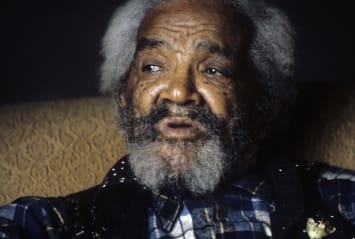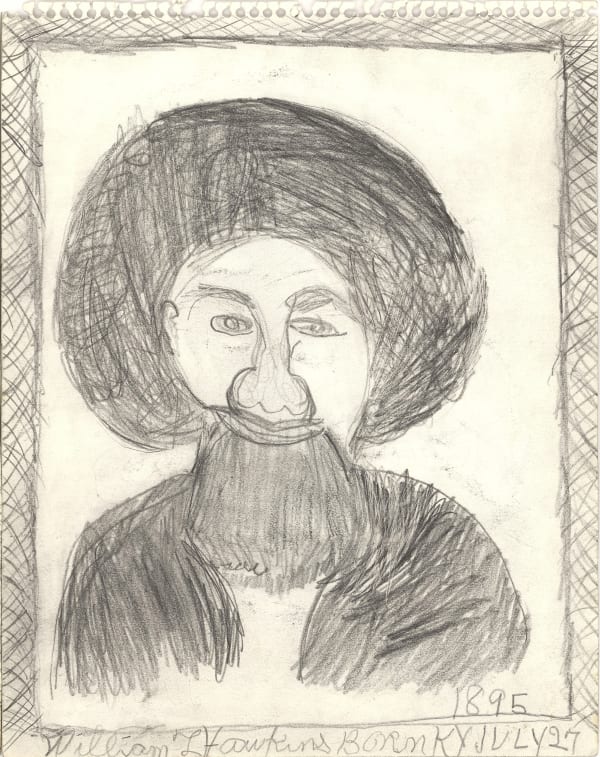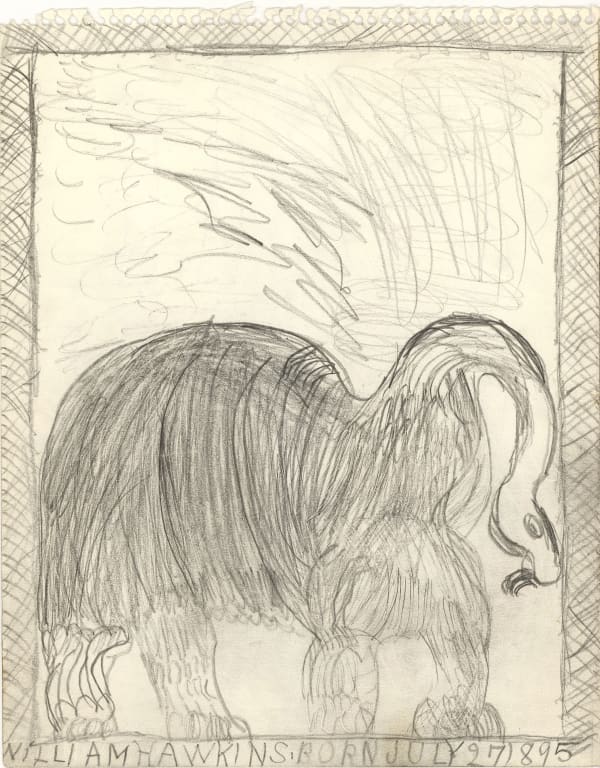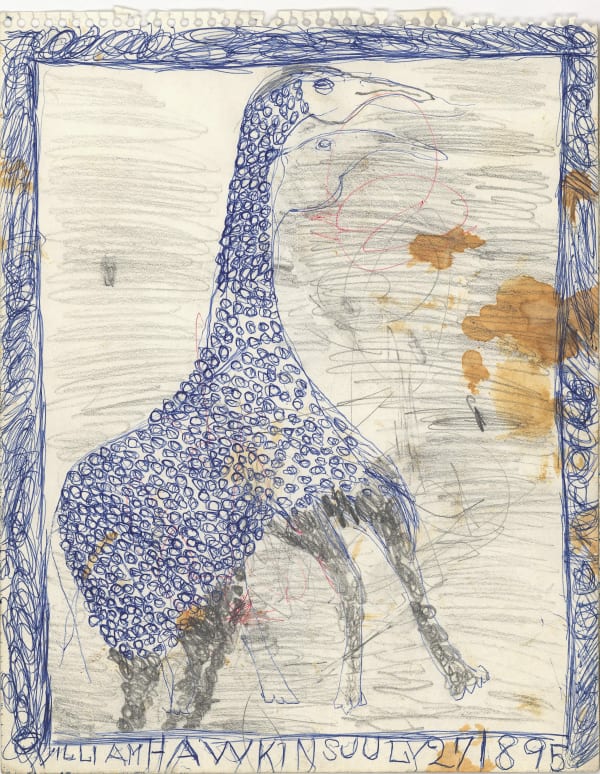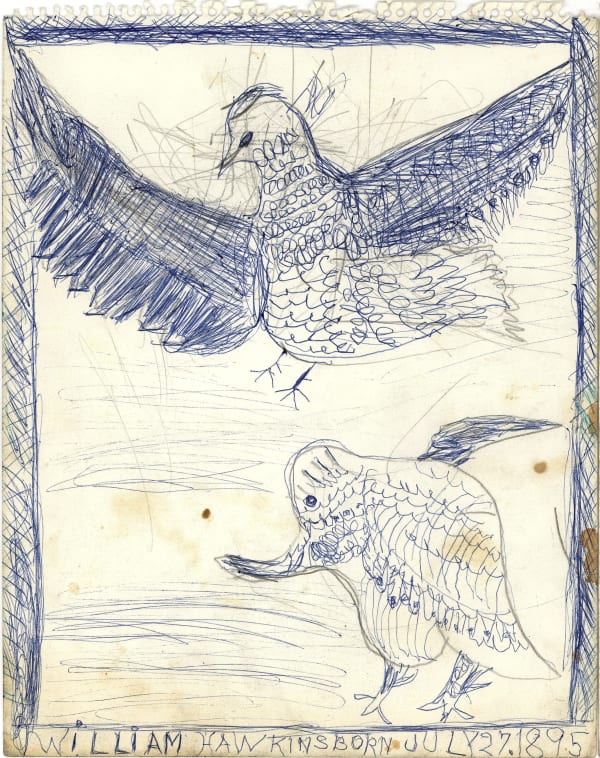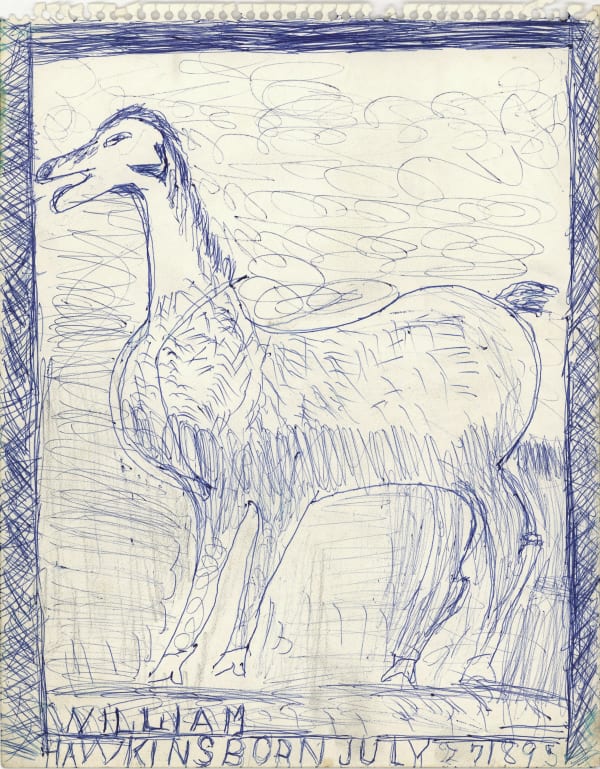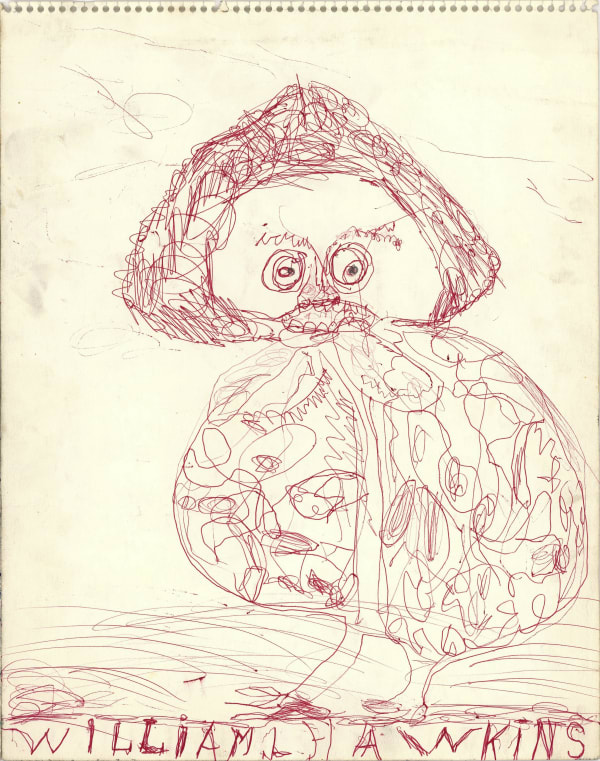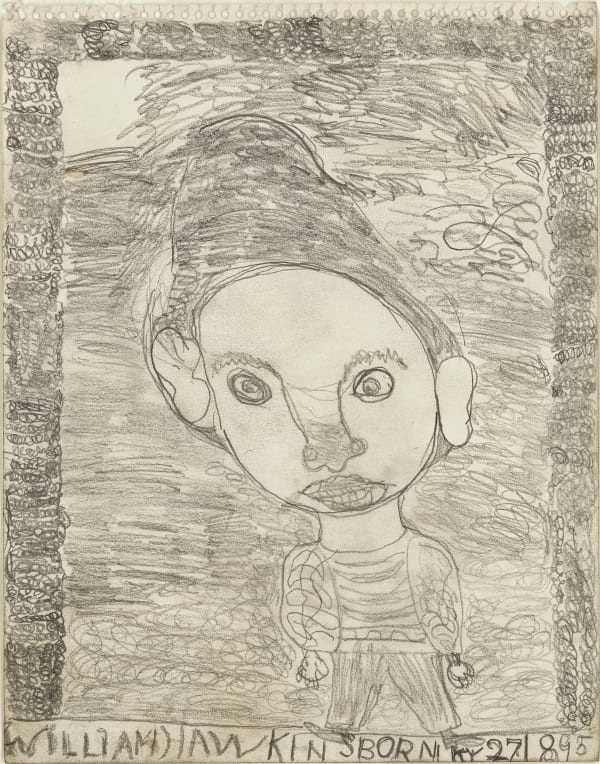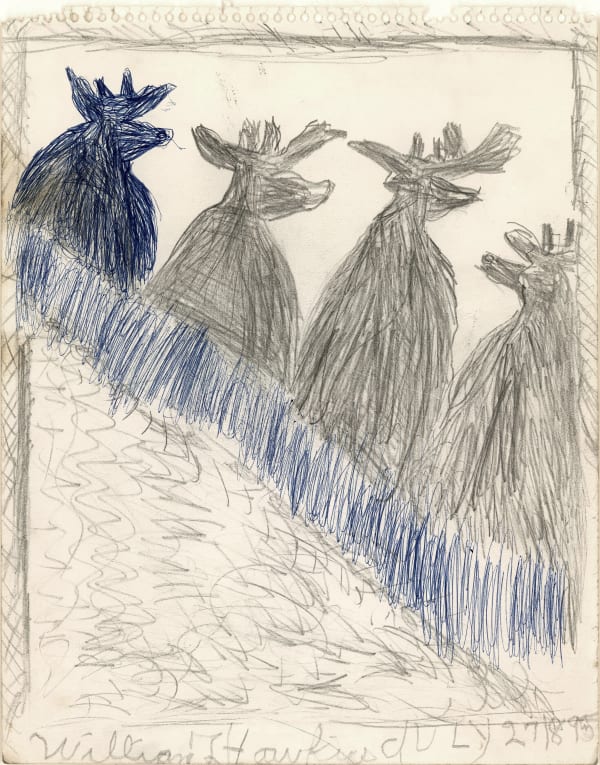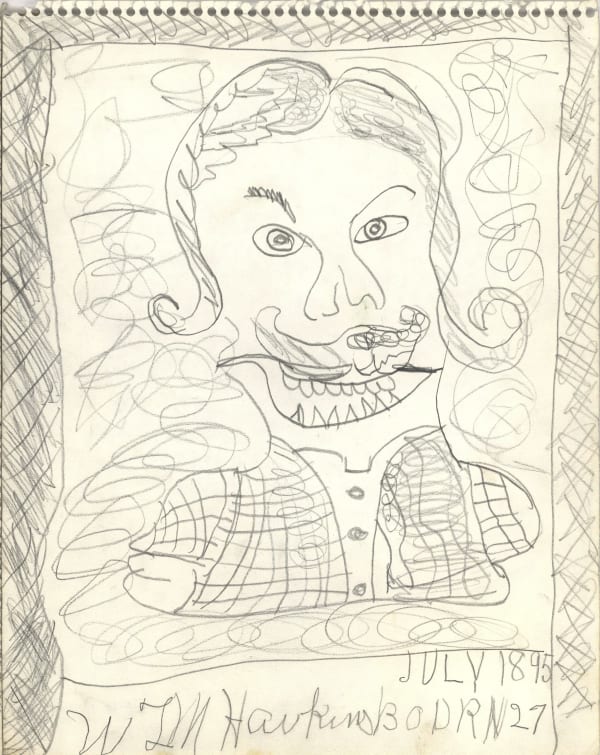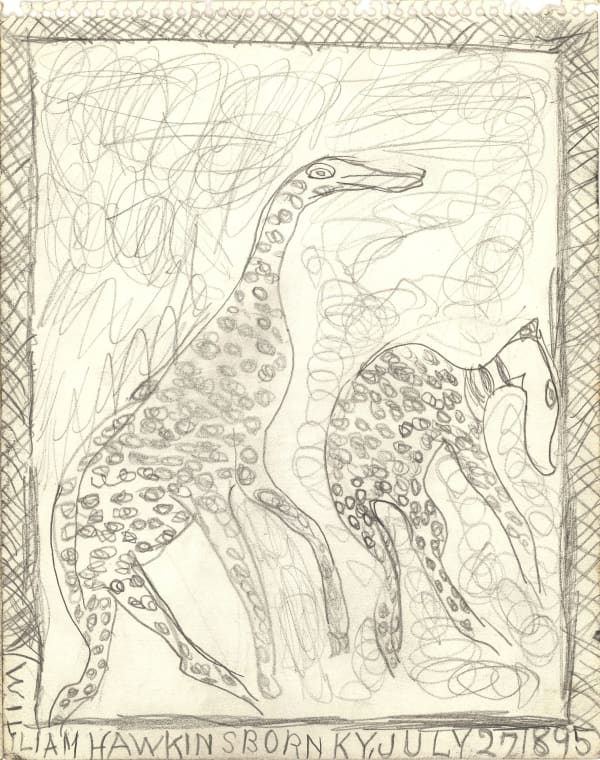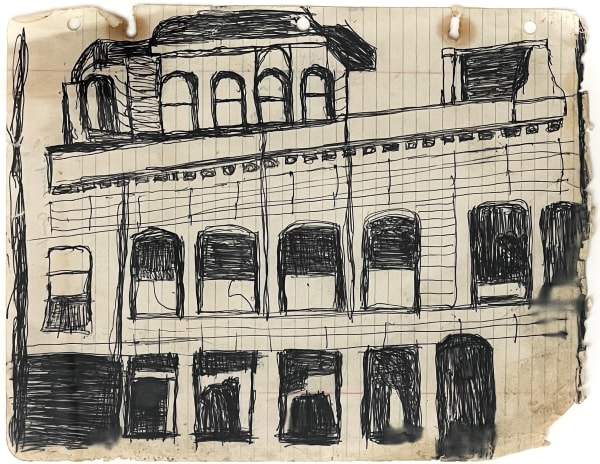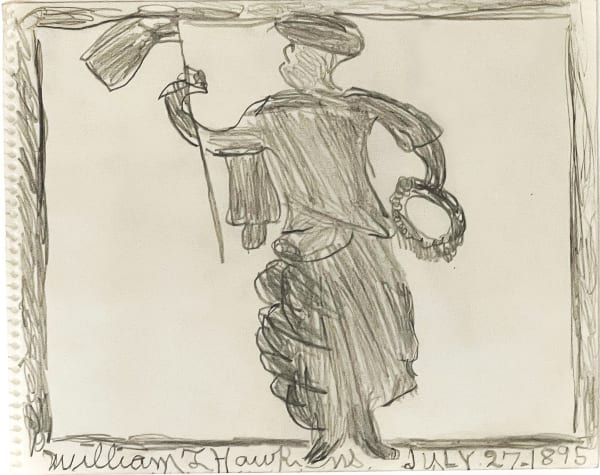William Hawkins’s main source of inspiration was the print media of his time, the pictures in newspapers and magazines that he retrieved from the trash stored in a suitcase.
Before starting to work on a painting, Hawkins would often work out basic compositional problems on paper. The drawings presented in this online exhibition were always meant to be the beginning of a process that was wonderfully spontaneous. When asked about art-making, the first thing the artist would say was that he had been drawing all his life. This was true. Even though he did not start painting in earnest until the late 1970s (he was always a hard, industrious worker and never had the luxury of time), drawing could be done anywhere, quickly.
It was never Hawkins's intention to sell his drawings, so he didn’t treat them with particular care—he might have been working on one while eating lunch or dinner. There is nothing "precious" about the artist's work, and this extends to his drawings. It’s also true that they are as fearless and whimsical as his paintings are.
-
All works:
ca. 1982-86
$2,800 ea.
Archival framing available -
Hawkins (1895 - 1990) lived most of his life in Columbus, Ohio, where he relocated in his twenties to avoid a shotgun wedding. He was born in rural Kentucky and his early years on a farm afforded him a knowledge and love of animals—an awareness that informs many of his works. In Columbus he held an assortment of unskilled jobs and did not begin painting until he was in his early eighties. He worked without letup thereafter, in spite of illness and advancing age.
His range of subject matter included animals (common, exotic, extinct, and semi-fantastical), cityscapes (iconic landmarks, depictions of prominent buildings), and classic religious and pop iconography. His sense of composition was fearless, expressive, and improvisational, resulting in works that palpitate with their creator’s drive and imagination. Hawkins would most often paint decorative borders around his work and include his name and birthplace in big handwriting—a signature element that was both visual and informational, and particularly symbolic given that the artist could scarcely read or write. The artist was proud of his age and wanted everyone to know it.
-
Hawkins did not receive recognition for his work until his friend Lee Garrett entered one of his paintings in the Ohio State Fair, where it won first prize. The artist was then in his eighties but continued to be immensely prolific. By the next year (1983), Ricco/Maresca Gallery had started representing him, launching his career nationally and internationally. In 1989 he suffered a stroke from which he only partly recovered and died months later, in 1990. Today, the artist's work can be found in the permanent collections of the Milwaukee Art Museum, the Brooklyn Museum, the American Folk Art Museum (New York), The Newark Museum of Art (New Jersey), the Philadelphia Museum of Art, the High Museum of Art (Atlanta), the Columbus Museum of Art (Ohio), The New Orleans Museum of Art, and the Smithsonian American Art Museum (Washington D.C.), among others. In 2018, William L. Hawkins: An Imaginative Geography, a comprehensive exhibition including 60 of the artist’s most important works and an accompanying catalog, opened at the Columbus Museum of Art—later traveling to the Mingei International Museum (San Diego, California), the Figge Art Museum (Davenport, Iowa), and the Columbus Museum in Georgia.
